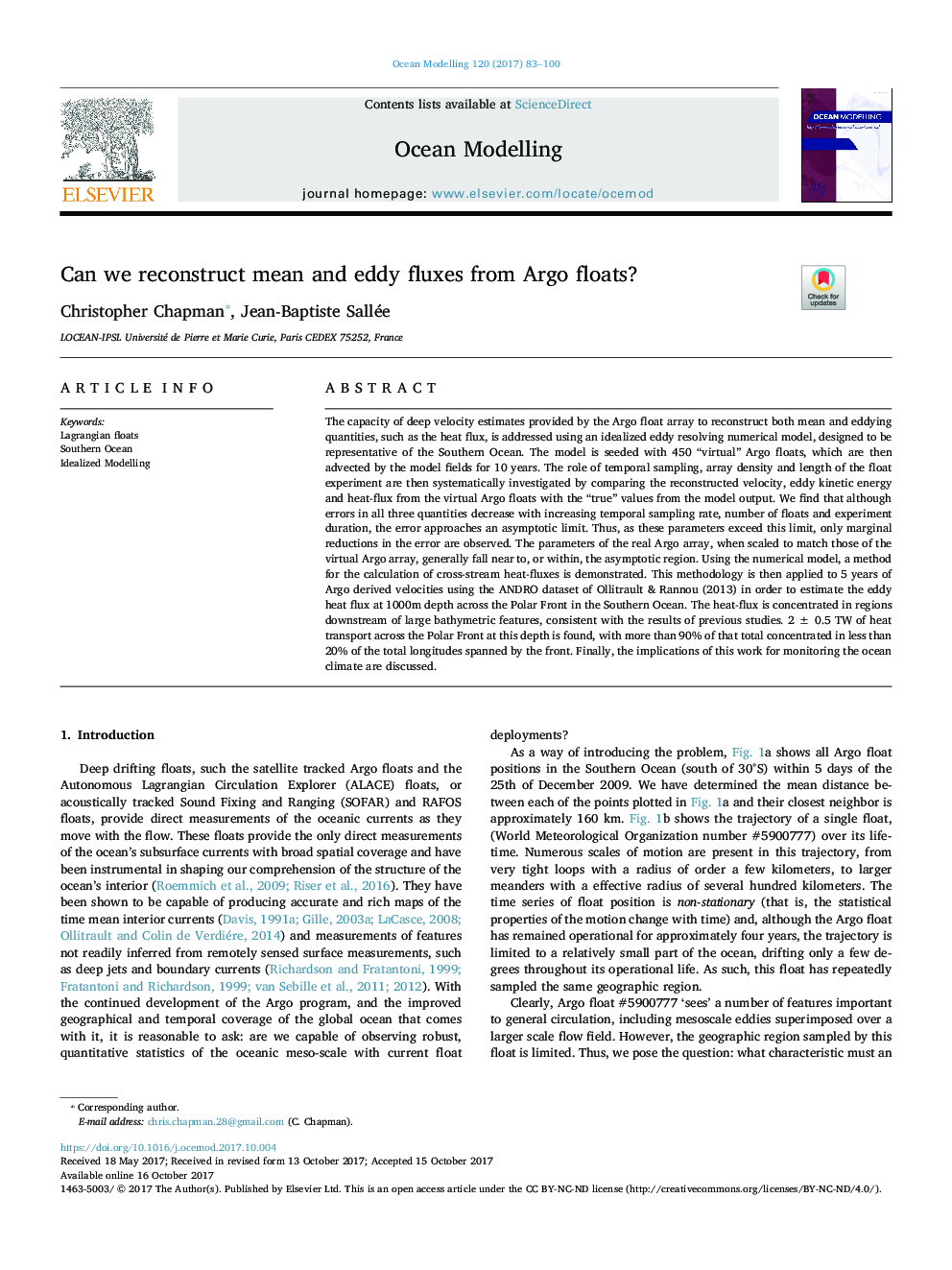| کد مقاله | کد نشریه | سال انتشار | مقاله انگلیسی | نسخه تمام متن |
|---|---|---|---|---|
| 8886557 | 1627729 | 2017 | 18 صفحه PDF | دانلود رایگان |
عنوان انگلیسی مقاله ISI
Can we reconstruct mean and eddy fluxes from Argo floats?
ترجمه فارسی عنوان
آیا می توانیم جریان های متوسط و جادویی از شناورهای آرگو را بازسازی کنیم؟
دانلود مقاله + سفارش ترجمه
دانلود مقاله ISI انگلیسی
رایگان برای ایرانیان
کلمات کلیدی
شناور لاگرانژی، اقیانوس جنوبی، مدل سازی ایده آل
موضوعات مرتبط
مهندسی و علوم پایه
علوم زمین و سیارات
علم هواشناسی
چکیده انگلیسی
The capacity of deep velocity estimates provided by the Argo float array to reconstruct both mean and eddying quantities, such as the heat flux, is addressed using an idealized eddy resolving numerical model, designed to be representative of the Southern Ocean. The model is seeded with 450 “virtual” Argo floats, which are then advected by the model fields for 10 years. The role of temporal sampling, array density and length of the float experiment are then systematically investigated by comparing the reconstructed velocity, eddy kinetic energy and heat-flux from the virtual Argo floats with the “true” values from the model output. We find that although errors in all three quantities decrease with increasing temporal sampling rate, number of floats and experiment duration, the error approaches an asymptotic limit. Thus, as these parameters exceed this limit, only marginal reductions in the error are observed. The parameters of the real Argo array, when scaled to match those of the virtual Argo array, generally fall near to, or within, the asymptotic region. Using the numerical model, a method for the calculation of cross-stream heat-fluxes is demonstrated. This methodology is then applied to 5 years of Argo derived velocities using the ANDRO dataset of Ollitrault & Rannou (2013) in order to estimate the eddy heat flux at 1000m depth across the Polar Front in the Southern Ocean. The heat-flux is concentrated in regions downstream of large bathymetric features, consistent with the results of previous studies. 2â¯Â±â¯0.5 TW of heat transport across the Polar Front at this depth is found, with more than 90% of that total concentrated in less than 20% of the total longitudes spanned by the front. Finally, the implications of this work for monitoring the ocean climate are discussed.
ناشر
Database: Elsevier - ScienceDirect (ساینس دایرکت)
Journal: Ocean Modelling - Volume 120, December 2017, Pages 83-100
Journal: Ocean Modelling - Volume 120, December 2017, Pages 83-100
نویسندگان
Christopher Chapman, Jean-Baptiste Sallée,
